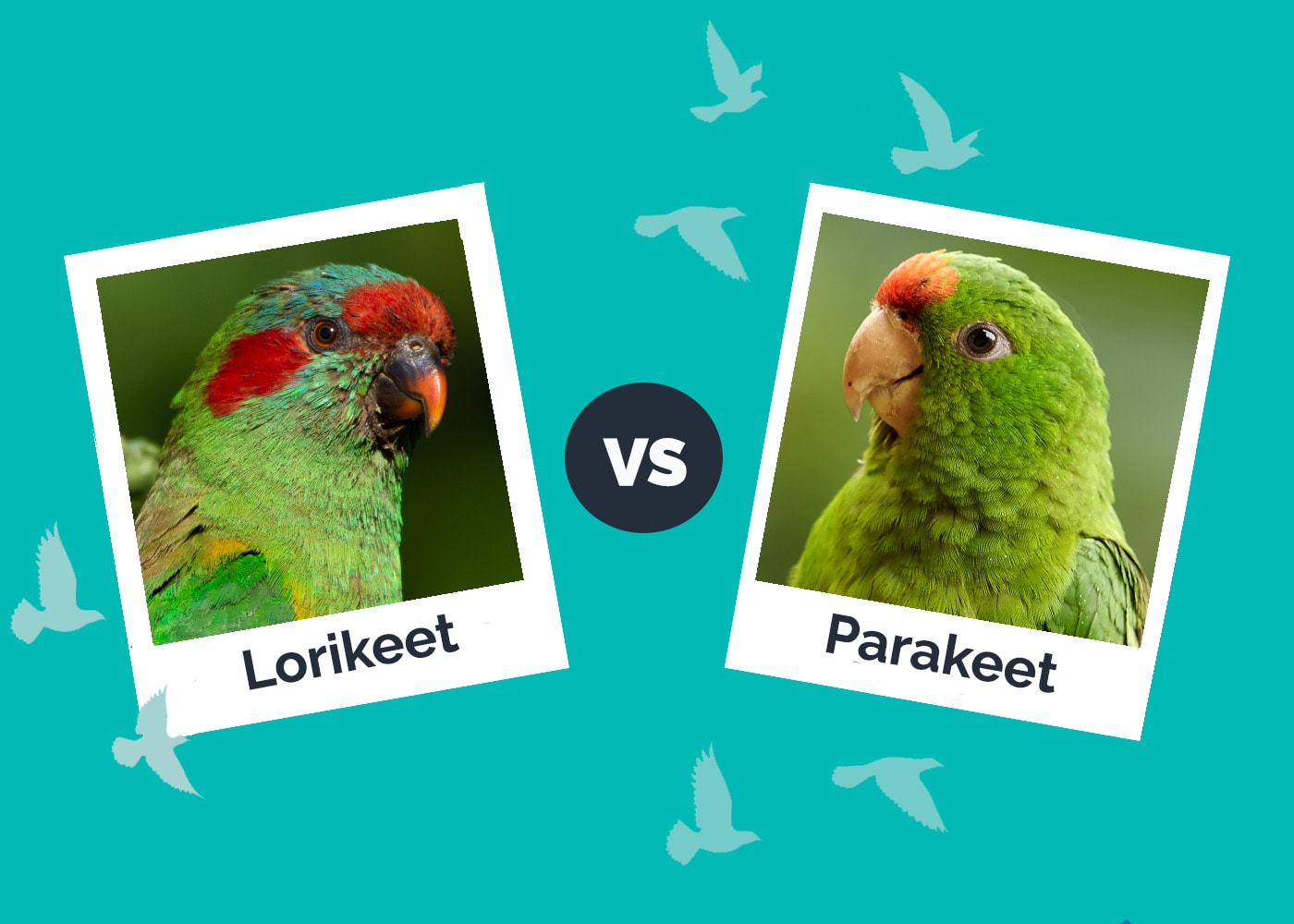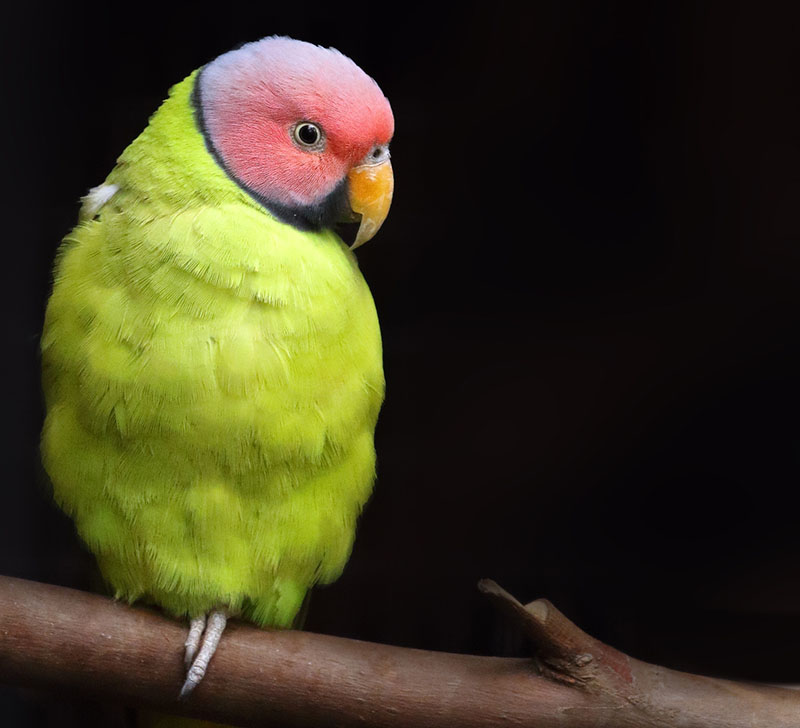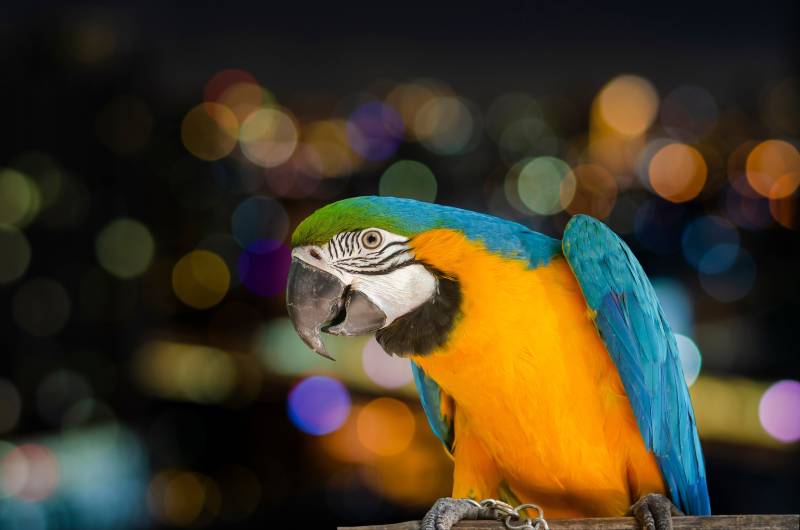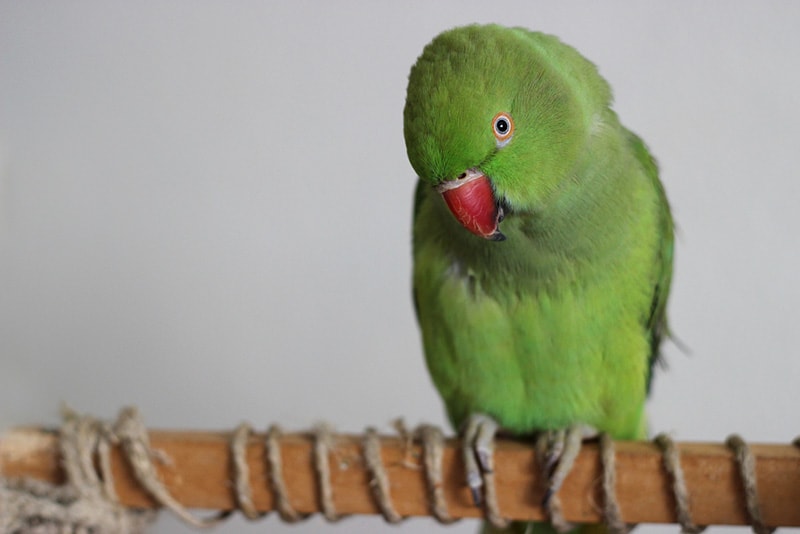Lorikeet vs Parakeet: Vet-Reviewed Differences
By Jordyn Alger
Updated on

Click to Skip Ahead
This article has been reviewed for factual accuracy by a qualified veterinarian. The views and opinions expressed herein are those of the author and do not necessarily represent the views or opinions of the veterinarian.
Birds are phenomenal creatures. Their vivid appearance, combined with their quirky vocalizations, makes them highly entertaining companions. If you are considering adding a bird to your household, you may have narrowed down your options to the Lorikeet and the Parakeet. While these birds may seem similar on the surface, they are both incredibly unique.
Lorikeets and Parakeets are both birds in the Psittaciformes (parrot) order. Lorikeets comprise 53 species of birds in the subfamily Loriinae, native to Australia and New Guinea. Parakeets refer to 115 species of birds in the subfamily Psittacinae, found throughout the Asia-Pacific. For the purposes of this article we will refer to the budgerigar (Melopsittacus undulatus), commonly referred to as the parakeet, and the rainbow lorikeet (Trichoglossus moluccanus).
When considering which bird is right for you, you need to know more about their temperament, training requirements, activity needs, and healthcare. In this article, we will take a thorough look at what it looks like to own and care for each bird to help you make an informed decision about which species is right for you.
Visual Differences

At a Glance
- Average height (adult): 10–13 inches
- Average weight (adult): 6– 5.5 ounces
- Lifespan: 7–30 years
- Level of care: Intermediate
- Enclosure needs: 36” L x 24” W x 36” H for one Lorikeet
- Family-friendly: Yes
- Other pet-friendly: No
- Trainability: Intelligent and can learn tricks
- Average height (adult): 6-8 inches
- Average weight (adult): 1–1.4 ounces
- Lifespan: 5-20 years
- Level of care: Beginner
- Enclosure needs: 24” L x 18” W x 18” H for one Parakeet
- Family-friendly: Yes
- Other pet-friendly: Often
- Trainability: Intelligent and can learn tricks
Lorikeet Overview
Personality / Character
Lorikeets are known for their vivacious, curious personalities. They are playful, comedic entertainers, always inspiring laughs with their clownish behavior. You’ll often see the Lorikeet hopping around or hanging upside down. Some may describe the Lorikeet as loud and occasionally obnoxious, but those who love the Lorikeet recognize their fun-loving nature for what it is.
While charming, this bird can also be mischievous. Boredom is the bane of the Lorikeet’s existence (as well as the Lorikeet’s owner), so enrichment is vital. Without adequate enrichment, the Lorikeet may start trouble to avoid being bored.
Lorikeets are known to bite on occasion, especially if overstimulated or scared. If you want a bird that doesn’t bite much, lorikeets may not be the best option. For this reason we recommend never leaving children unsupervised with a lorikeet.
They do well in captivity and are delightful pets. However, the Lorikeet does not always do well when housed with other birds. They can become territorial and even hostile toward other birds in their space, so housing a Lorikeet in a shared enclosure with unfamiliar birds is not ideal.

Training
It is possible to train the Lorikeet, but training an older one can be a challenge. Younger Lorikeets are easier to tame and train, but older Lorikeets can be stubborn and occasionally self-willed. Likewise, they may be slower to adapt to new situations.
When training the Lorikeet, it is best to focus on positive reinforcement. Reward-based training is more likely to motivate your pet to engage in training sessions. Similarly, positive reinforcement can help you to build a bond with your Lorikeet.
Exercise
Exercise is essential for the Lorikeet. To keep them active, take advantage of toys that engage their curious personalities. Toys with a variety of shapes, textures, and colors are ideal. Foraging toys are also an excellent choice for the Lorikeet.
Providing a range of structures inside of their enclosure will keep the Lorikeet active. Perches, ladders, and swings will keep your bird’s feet active and work to combat sores. But make sure you take them out of their enclosure a few times a day for exercise too.
Health & Care
Lorikeets are typically healthy. Still, you should take your pet to a trusted avian veterinarian at least once a year for a thorough physical examination to verify their health. Your vet will examine the state of your Lorikeet’s beak, nails, and feathers or perform laboratory tests as needed. Lorikeets are susceptible to a liver disease known as hemochromatosis or iron storage disease. It is recommended that your Lorikeet’s iron intake is strictly controlled.
They are also susceptible to a beak and feather disease caused by psittacine circovirus (PCV). This virus causes bird’s feathers, nails, and beak to be malformed, brittle and break easily. The virus is passed from infected individuals to healthy birds through direct and indirect contact, so good quarantine measures and hygiene are needed if you have new birds coming into the house.

Suitable For:
Lorikeets are excellent pets for somewhat experienced bird owners. Their level of care is unsuitable for beginners since they require higher levels of maintenance. At the same time, multi-bird households may not be ideal for the Lorikeet due to their territorial nature. However, prospective pet owners who appreciate a whimsical, talkative bird and have plenty of time to devote to them will love caring for a Lorikeet.
Parakeet Overview
Personality / Character
The Parakeet is a friendly, extroverted companion. If you have multiple birds in your home, the Parakeet can be a great addition since they thrive with social interaction. They can also be housed with other birds without much trouble. If you decide only to have one Parakeet, you’ll need to be prepared to spend a lot of time with them. Parakeets need lots of attention and do not adjust well to prolonged periods without interaction.
While kind and gentle, the Parakeet can be occasionally nippy. Most often, Parakeets will bite when they are startled or handled improperly. To avoid being bitten, make sure that you pick up your Parakeet correctly and avoid hurting them. If they are not used to humans, they will be startled easily, so take it slow if your pet has not been well handled.
Many people consider the Parakeet to be the ideal family bird. They love to be around people and entertain them. Furthermore, they don’t tend to chirp very loudly.

Exercise
Parakeets must exercise outside of their cage every day, which allows them to stretch and flap their wings. While inside their enclosure, there are many ways to keep your pet active. You can provide them with a rotation of exciting and engaging toys, and offer plenty of physical structures (such as perches, ladders, etc.) inside the cage.
Training
Parakeets are clever birds, and they are a delight to train. Their intelligence makes house training chores a breeze and allows an ambitious owner to train their bird to perform tricks. Parakeets can be trained to fly to specific spots, pick up items, and execute other practical commands.
Health & Care
Providing healthcare for your Parakeet is a vital part of being a responsible pet owner. At least once a year, you should schedule a consultation with an avian veterinarian to discuss and evaluate your Parakeet’s health. While annual diagnostic tests are not standard for Parakeets, your vet may recommend that laboratory tests be performed.

Karel Bartik, Shutterstock
Suitable For:
Parakeets are great companions for first-time and experienced bird owners. Due to their affectionate personalities, they make excellent family pets and can be a great addition to multi-bird households. If you only adopt one Parakeet, you’ll need to spend time with them daily since they thrive on social interactions. Parakeets are excellent pets for kids as long as they are taught how to handle the birds.
Which Breed Is Right for You?
After learning more about the Lorikeet and the Parakeet, you now have to ask yourself: which bird is the right fit?
The Lorikeet is a great companion for those who want to be constantly entertained by their pet. If you want a “class clown” for a pet, the Lorikeet is a perfect match! However, Lorikeets aren’t ideal for households with multiple birds or first time bird owners. If you already care for birds, adding a Lorikeet into the mix could be a massive headache.
As for the Parakeet, they’re a friendly, extroverted pet that loves to interact with other birds. Multi-bird households are ideal for the Parakeet. If you are looking for a pet bird that doesn’t need much attention, the Parakeet is not the one.
Ultimately, deciding which bird is right for you depends on which bird’s care needs align best with your life. Whatever you decide, you will have a charming companion to brighten your day!
Featured Image Credit: (L) Adrian Borg, Shutterstock | (R) Martin Mecnarowski, Shutterstock













